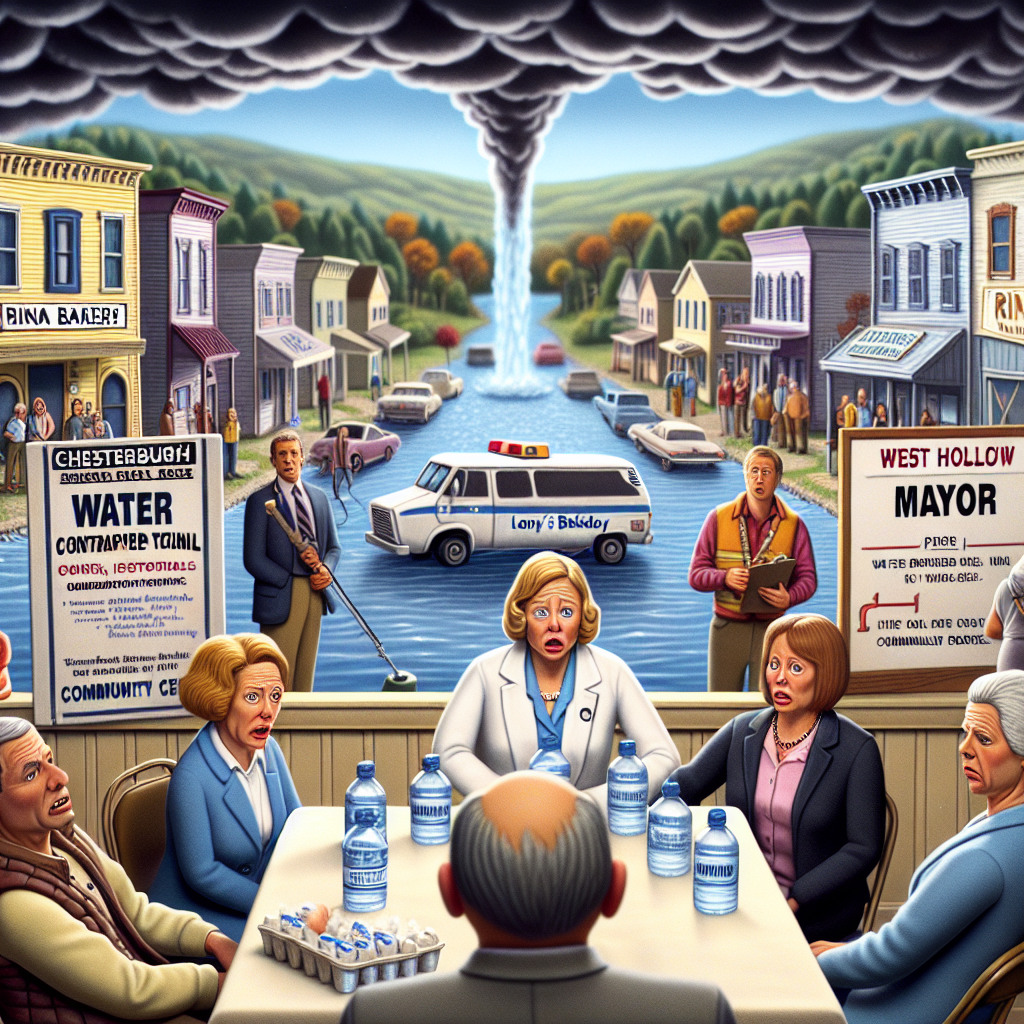“Chesterburgh’s Well Runs Dry: A Town United in the Face of Water Contamination Crisis”

Chesterburgh has always moved to the slow rhythms of its seasons—spring floods, summer parades, and winters softened by the glow of porch lights. But this week, under an unusually gray sky thick with the scent of damp earth and distant pine, an urgent unease has settled over the town like an unwelcome guest. The Chesterburgh Water Authority announced a sudden contamination warning for well water across several neighborhoods, including much of the historic West Hollow district.
The news came late Tuesday afternoon, just as the afternoon rain began to drum on the rusted tin roofs of Main Street. Residents had been alerted to avoid drinking tap water, boil it before use, and to limit all water consumption to essentials only—an edict that feels nearly impossible when you live in a place where water has always been at the heart of everyday life.
West Hollow's wells have served generations of families—digging deep into the earth, drawing on a delicate underground aquifer that runs beneath the town like a quiet, hidden river. The water there is not just hydration but memory: the same water rung through childhood mud pies, the same water poured into cups at the corner diner where neighbors swapped stories across cracked Formica tables. Now, that well has betrayed them.
I spoke with Evelyn Shaw, who has lived in her house on Fern Lane for forty-seven years, her silver hair pulled back in a loose braid, eyes troubled beneath her sun-faded baseball cap. "We always trusted the spring, the well beneath our feet," she told me, her voice trembling like the chime of wind bells on her front porch. "I woke up this morning and the tap water smelled... strange. Sweet but metallic. I thought maybe I was imagining it. Now, with this warning, it feels like a part of us is broken."
The source of contamination is still under investigation. Preliminary tests conducted by state environmental officials indicate the presence of volatile organic compounds (VOCs), substances typically linked to industrial solvents and fuel byproducts. This discovery points to a disturbing possibility: a leak or improper disposal from long-forgotten industrial sites, or perhaps a breach from recent construction on the outskirts of town.
Among those standing at the heart of this crisis is the local community health nurse, Lena Morris. She has been knocking on doors in Elm and Hickory Streets since the morning, distributing bottled water and advising families with vulnerable members—children, the elderly, those with compromised immune systems—to seek medical attention if they experience symptoms like nausea, headaches, or dizziness.
'We can’t wait for answers,' Lena confided, her phone cradled between shoulder and ear as she coordinated emergency responses. 'People here rely on that water every day, for everything. Bathing, cooking, drinking. Contamination means risk. And risk means fear. It’s a shock that unsettles the very foundation of home.'
The town’s mayor held a hastily arranged press conference at the community center late Wednesday afternoon. His usually calm demeanor was replaced by urgent concern as he addressed the crowd and reporters, emphasizing a commitment to transparency and rapid remediation. Yet, mere words do little to still the growing anxiety. Parents fret over their children’s health. Elders whisper about the land’s history and old factory sites many hoped to forget. Small businesses, particularly those depending on food preparation, are bracing for the economic sting of limited sanitation.
At Rina’s Bakery, a cherished spot tucked between the barber shop and thrift store, the ovens are off and the counters wiped clean for the first time in decades during afternoon hours. Rina herself stands behind the glass case, hands clutching the edge as she watches her loyal customers walk by with uneasy eyes. 'Water shapes everything here,' she said quietly. 'Our dough, our coffee, our very bre
